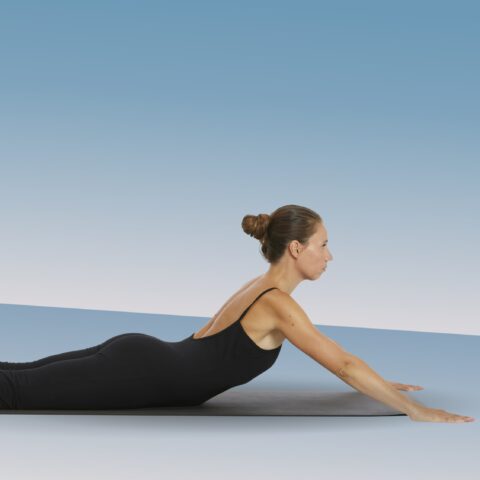As a dedicated Pilates practitioner, you might be asking, “How often should you do Pilates to see the best results?” The answer isn’t one-size-fits-all and depends on your unique health and fitness goals.
Table of contents
Understanding your personal goals
Before diving into the recommended frequency of your Pilates workouts, it’s important to understand your goals.
Joseph Pilates designed the Pilates Method to help improve flexibility, build strength, rehabilitate, and enhance overall health, which might draw anyone to this workout interested in any of these focuses.
Movements are typically done on a mat with body weight for resistance or on specialized Pilates equipment that adds weight or resistance to movements with components of the machine. As you choose classes, factor in how they will serve your goals and fit into your every day schedule.
Consider the following questions to determine your fitness goals:
- What are you looking to achieve through Pilates? Are you aiming to increase flexibility, build endurance, or improve posture?
- Do you have any specific areas of focus, such as targeting back pain, developing leg muscles, or strengthening your pelvic floor?
- Are you using Pilates sessions as a standalone exercise or to complement other forms of exercise?
- Are you interested in progressing to more advanced exercises?
By understanding your goals, you can tailor sessions to meet your specific needs for the best results. This will play a crucial role in determining how often you should do a session and the intensity of your workouts.
How often should you do Pilates classes?
Determining the frequency of your workouts will also depend on other factors, including your fitness level and availability. Whether you have a goal in mind of practicing a few times a week or every day, there are some general guidelines to consider:
Beginners
If you’re new to Pilates, it’s recommended to start with classes 2-3 times a week. This frequency allows you to adapt to the exercises, learn proper form, and begin building strength and flexibility.
Intermediate practitioners
For those who have developed a solid understanding of the exercises, 3-4 classes per week, for example, would be a reasonable goal. This allows for progress and improvement in technique, strength, and flexibility. It also provides enough time for muscle recovery between sessions.
Advanced practitioners
If you’re an advanced Pilates practitioner looking to challenge yourself, 4-5 classes per week may be suitable. Depending on the intensity of the workouts and your schedule, it might even be possible to do a session every day.
Remember that while Pilates offers a challenge for the different muscle groups, it’s much more than those exercise types that focus on body composition. It’s a holistic approach, and there are classes tailored to breathing or stretching, for example, for a more restorative experience.
Complementary workout
If you’re using Pilates to complement other exercise types, such as weightlifting or yoga, 1-2 classes per week can be beneficial. Pilates helps improve core strength, flexibility, and overall body awareness, enhancing your performance in other activities.
Remember that these training recommendations are just guidelines. It’s crucial to listen to your body and rest your muscles.
Benefits of Pilates exercises
With its holistic approach to fitness, Pilates has many benefits that can positively impact your wellbeing:
- Improved strength and flexibility
- Enhanced body awareness
- Stability in core muscles and postural alignment
- Stress relief and mental well-being
With consistency, you too can begin to see the physical and mental benefits Pilates offers, and progress towards your goals more effectively.
Designing your personal Pilates workout schedule
As much as you might want to make it to your mat every day, there are many factors to consider when creating a workout schedule. Here are a few steps to help guide you:
Assess your availability
Start by assessing how you can make it to your mat each week. Consider the commitments you will have to schedule your workouts around. Remember, like with most things, consistency is key, so choose a workout schedule you can realistically stick to.
Determine your goals
Refer back to the understanding of your personal goals discussed earlier. Are you looking to improve flexibility, build strength, or target specific areas of your body? Understanding your goals will guide you in selecting the appropriate exercises and frequency for your workouts.
Mix up your Pilates practice
To ensure a well-rounded practice, incorporate exercises that focus on control, strength, flexibility, balance, and overall conditioning. This variety will prevent boredom, challenge you in different ways, and benefit your overall wellness.
Consider class schedules and resources
Considering how to fit Pilates into your schedule? Our Pilates studio in Helsinki offers a variety of class times to accommodate different lifestyles. For added flexibility, we also have online Pilates classes available through BAY STUDIOS+, allowing you to participate from home at your convenience.
Allow for rest and recovery
Incorporate rest days into your schedule. Rest and recovery are vital components of any workout routine, including Pilates. Overtraining can lead to fatigued muscles, decreased performance, and increased risk of injury.
Seek professional guidance
If you’re new to Pilates, be sure to closely follow the instructions of a Pilates instructor with proper education. Professional guidance ensures you are practicing safely and effectively.
Remember, designing a personal Pilates workout schedule is a dynamic process. It’s important to listen to your body, make adjustments as needed, and be open to trying a new movement or Pilates class.
By designing a schedule that aligns with your availability, goals, and preferences, you can stay committed to your routine and maximize the benefits of incorporating a Pilates workout into your everyday life.
Commit to your Pilates workouts
Commitment is essential for long-term success and reaping the full benefits of this exercise method. It’s easy to get caught up in everyday life or lose motivation, but with the right strategies, you can stay committed. Here are tips to help you stay on track:
- Set realistic goals: Clearly define your objectives and break them down into manageable milestones.
- Create a schedule: Make your sessions a part of your daily or weekly schedule.
- Find an accountability partner: Have a workout buddy or join a Pilates group for motivation and accountability.
- Track your progress: Record your progress and improvements.
- Stay motivated with variety: Mix up your Pilates workouts with different classes or introduce Pilates equipment to your sessions.
- Listen to your body: It’s important to take time to rest and recover when our bodies require, or modify exercises to avoid injuries and muscle fatigue.
- Celebrate achievements: Acknowledge and celebrate every milestone you achieve, no matter how small.
By committing to your Pilates workouts and implementing these strategies, you can experience the transformative benefits of Pilates on your body and mind.
To simply answer the question of how often you should roll out your mat or dive into the nearest studio class, it will depend on the mixture of these goals, your fitness level, and availability.







